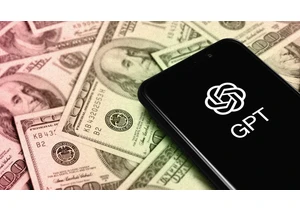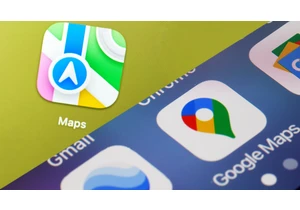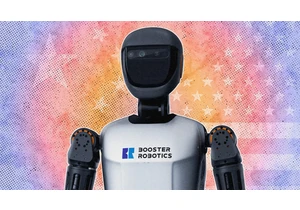Last September, Dr. Shuhan He, a faculty member at Massachusetts General Hospital’s Computer Science Lab, contributed an article to the Journal of the American Medical Association drawing attention to the creation of a comprehensive set of medical emoji. “The next step is for the medical community to better leverage these hard-won emoji. But how? And why?” he wrote. In his piece, the doctor outlined a rash of ideas for how clinicians could use these digital hieroglyphs. The use cases range from helping patients communicate their symptoms or pain levels to making discharge instructions more comprehensible. Plus, he noted, more of medicine is happening online. It makes sense that the healthcare community should embrace the natural language of digital spaces. Over the past six years, medical emoji have slowly been seeping into the lexicon defined by the Unicode Consortium standards body. That started with a syringe and pill in 2016 and has since expanded to some 30 emoji representing illness, body parts and organs, healthcare workers, medicines, tools, wheelchairs, and canes. Even the rod of Asclepius—the familiar symbol of medicine and healthcare dating to ancient Greece—is an emoji. There are now more than 45 emoji that are in some way related to health within the 1,853-character system.There are now more than 45 emoji that are in some way related to health within the 1,853-character system. He, in tandem with technologist Debbie Lai and journalist Jennifer 8. Lee, are trying to get another 15 medical emoji adopted by Unicode, including intestines, leg cast, stomach, spine, liver, kidney, pill box, pill pack, blood bag, IV bag, CT scan, ECG, and white blood cell. So far, they’ve gotten a crutch approved. Medical emoji are gaining ground outside of Unicode too. In 2021, Daniel Burka, a former design partner for Google Ventures and founder of global health initiative Resolve to Save Lives, launched Health Icons, an open-source set of medical images to be used in new health projects. The goal is to help support the use of emoji in digital health. It’s not an unprecedented idea. The Wong-Baker Faces pain scale developed by Dona Wong and Carrie Baker Smiley in 1983—which includes eight cartoon faces expressing increasing levels of discomfort—has proven to be an extremely useful tool in understanding how kids are feeling. It stands to reason that emoji could also be useful in instances where there is a language barrier or when a patient is unable to communicate verbally. And yet so far adoption of these medical emoji has been slow. In a recent report on emoji use in healthcare, PerfectServe, which provides communications software to health systems, noted that healthcare workers are largely using emoji with each other. As you might imagine, the most used symbols are many of the ones you probably use too: thumbs up; smiling face with smiling eyes; folded hands; face with tears of joy; okay hand; person face-palming; slightly smiling face; person shrugging; beaming face with smiling eyes; and ye olde grinning face. Clinicians did use some medical emoji as well, but the main use case seems to be affirming something that a colleague said. Among doctors, those in internal medicine used emoji the most in their communications. The data raises a question: Do healthcare workers need a whole dictionary of medical emoji? “I don’t think emojis or even text messaging is ever going to replace the face-to-face conversation that clinicians have to have,” says Kelly Conklin, chief clinical officer at PerfectServe and a former emergency room nurse. “Regulatory bodies don’t allow for orders to be texted or sent electronically.” There are also concerns about emoji impinging on the overall sense of professionalism in medicine. But Conklin says that emoji are a common language and she could see a future where they’re used more regularly in a medical context—especially as more communication between doctors and patients is happening online. Messaging via emoji Bon Ku, an emergency room doctor and director of the Health Design Lab at Jefferson University in Philadelphia, says he doesn’t personally use emoji at work. But he does think that the conversation around emoji is intriguing. In particular, he sees an opportunity for their use in health campaigns. “Icons rather than text are useful in public health messaging, especially when you are communicating with different groups who speak multiple languages,” Ku says. Years before COVID-19, a 2018 paper in Antimicrobial Resistance & Infection Control noted that emoji could be useful in global health efforts to get people to wash their hands. “Concerning the infiltration of emojis into scientific literature, it is imperative to evaluate the impact of these symbols in health-related fields in order to harness their potential advantages for appropriate research applications and stave off scientific miscommunication,” the authors wrote. In situations other than public health messaging, part of what keeps doctors from using emoji with patients is that there isn’t a clear context for them—yet. Patient intakes and follow-ups are largely done in person. But even if more aspects of healthcare move online and emoji are incorporated into patient health questionnaires, it’s not clear that they’ll be received by the intended targets. BroadbandNow Research estimates that 42 million Americans don’t have access to broadband. The International Telecommunications Union, the U.N.’s agency for information and communication technologies, reports that globally 2.9 billion people don’t have internet. “Digital communication is susceptible to the digital divide that precludes those with less access to technology, especially older patients,” He wrote in his JAMA article, adding that doctors have a duty to shape a medical emoji language and its use in a way that is inclusive and accessible. Emoji are already part of the global, mainstream dialogue, he argues, and “with medical emoji still in their infancy there is a window of opportunity for the clinical community to proactively shape the way this method of communication is incorporated into medical practice and research.”
Login to add comment
Other posts in this group


The role of the CFO is evolving—and fast. In today’s volatile business environment, finance leaders are navigating everything from unpredictable tariffs to tightening regulations and rising geopol

In June, Google released its newest smartphone operating system, Android 16. The same month, Apple previewed its next smartphone oper


I’ve worked at the bleeding edge of robotics innovation in the United States for almost my entire professional life. Never before have I seen another country advance so quickly.
In


Restaurant industry leaders are excited for
